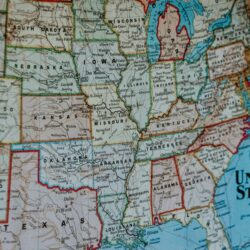Aussie Study Argues Book Publishing Sidelined in Ranking Universities

Academic book publishing is under threat. Global university rankings and competition for funding and international student enrolments are reshaping the research landscape. Academics are under more pressure to win grant funding and publish journal articles, rather than books, and be more strategic in their publishing.
With universities losing billions in revenue due to the impacts of COVID-19, these pressures are only going to increase.
Traditionally, a monograph published with a prestigious publisher has been a key medium to create and disseminate research in the humanities and social sciences. It has also been important for building scholarly careers and reputations. However, our research shows publishing pressures, incentives and rewards are changing.
A shift from quantity to quality
The Australian government’s approach to funding research has had a strong impact on what types of publications have been encouraged.
Australian universities first began reporting details of academics’ research outputs to the government in the 1990s as part of the formula for distributing research funding. The funds allocated for publication were significant. By 2001, a peer-reviewed journal article was “worth” more than A$3,000 to the university. A book was “worth” $15,000.

These rewards applied regardless of where the research was published. “Publish or perish” had well and truly taken over. Without appropriate measures to account for quality and impact, the system had the unintended consequence of encouraging academics to publish low-quality research with low-quality journals and publishers just to meet performance targets. The use of quantitative measures alone also increases the possibility for gaming and manipulation.
Publication data were eventually removed from the Higher Education Research Data Collection (HERDC) specifications in 2016. Since then, no government funding based on quantity (or quality) of research outputs has been distributed.
Australia’s current national research assessment exercise, Excellence in Research for Australia (ERA), began in 2010. The ERA system is designed to identify and improve quality of research through international benchmarking.
As a result, all universities expect “quality” publications from their staff. This is invariably understood as publishing with international and prestigious publishers and in high-ranking journals.
As universities compete against each other, they have a strong incentive to lift their research profile and to design internal reward schemes based on how ERA defines quality.
Academics are now fundraisers
Our research project looked at the publishing strategies and behaviours of academics in the humanities and social sciences. We found the pressures for quantity appear to have subsided (for some at least). However, there is now a greater push for quality, competitive grant funding and real-world impact.
While universities are still interested in quality publications, the changing funding rules mean universities that receive competitive funding get additional research funds through HERDC. This translates to greater pressure on academics to apply for and secure funding. Academic production appears to have shifted from publication as an outcome in itself to funding as the main measure of performance.
Funding bodies, in turn, are increasingly looking to researchers to show their research has quantifiable, real-world impacts. And ideally they should publish in open access publications.
Juggling publication quality and research impact
Academics are caught in the middle between the pressure to publish in quality outlets versus the need to demonstrate impact in the broader society. This creates a conundrum for academics in the humanities and social sciences in particular.
A number of participants in our research described the ways in which their university’s performance evaluations are aligned to publishing practices in science, technology and medicine. Citation metrics are commonly used as a proxy for quality in these fields. Books are generally not available or poorly represented in citation databases.
Many respondents felt their institutions devalued book publishing in favor of journal articles and collaborative authorship.
The emphasis on international publication means some subject areas are rated higher than others. For example, academics in Australian studies told us they felt their institutions undervalued their work.
We also observed an increase in the number of journal ranking lists or recommended publisher lists, created internally by universities. These are intended to make “quality” explicit by identifying where academics are advised to publish.
However, these lists discourage academics from publishing with local, niche, emerging or open-access book publishers and journals. These outlets might actually be a better fit for their target audiences and so lead to greater impact.
Distorting the value of academic inquiry
The different expectations of various stakeholders mean academics receive conflicting advice about publishing strategically. Academics are encouraged to engage with the Australian context and communities. At the same time, they are told to produce research that prestigious international journals and publishers will accept.
These pressures lead researchers to publish in ways that reflect how they are being measured. This appears, in turn, to influence their research agendas. The current research landscape seems to be more a reflection of what is being measured, rather than what is needed by society or would advance knowledge.
Academics, especially early career researchers, have no choice but to remain open to changing priorities, be they institutional or governmental. They must balance the contradictions and tensions in academia. In spite of the rhetoric of academic freedom, university performance expectations mean academics are increasingly required to construct their research agendas and publishing strategies to be attractive to grant funders and international publishers.
Apart from affecting individual academics’ careers, these practices have broad social and intellectual costs. For the humanities and social sciences, in particular, these trends could affect the future and relevance of these disciplines in Australia.





























































































